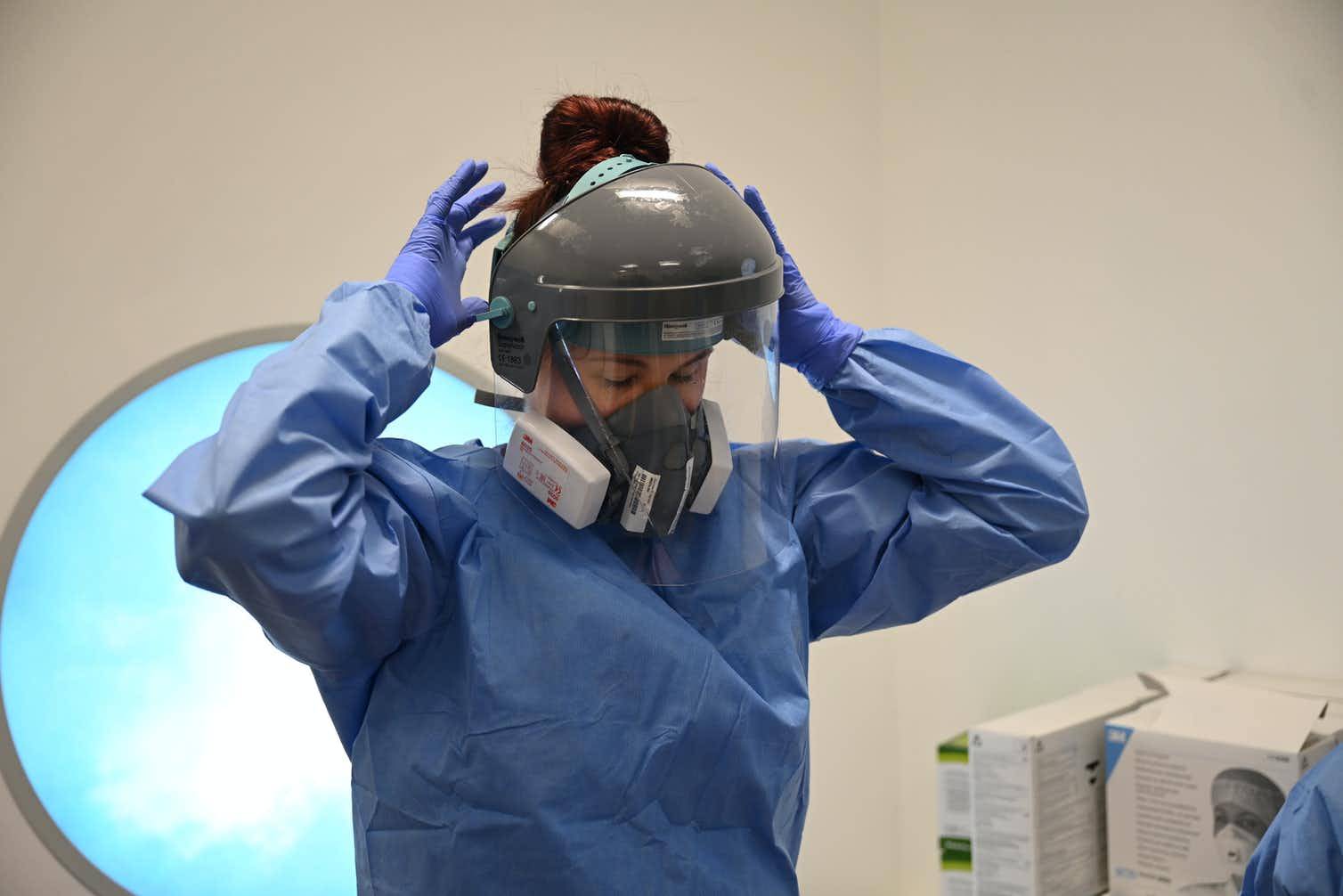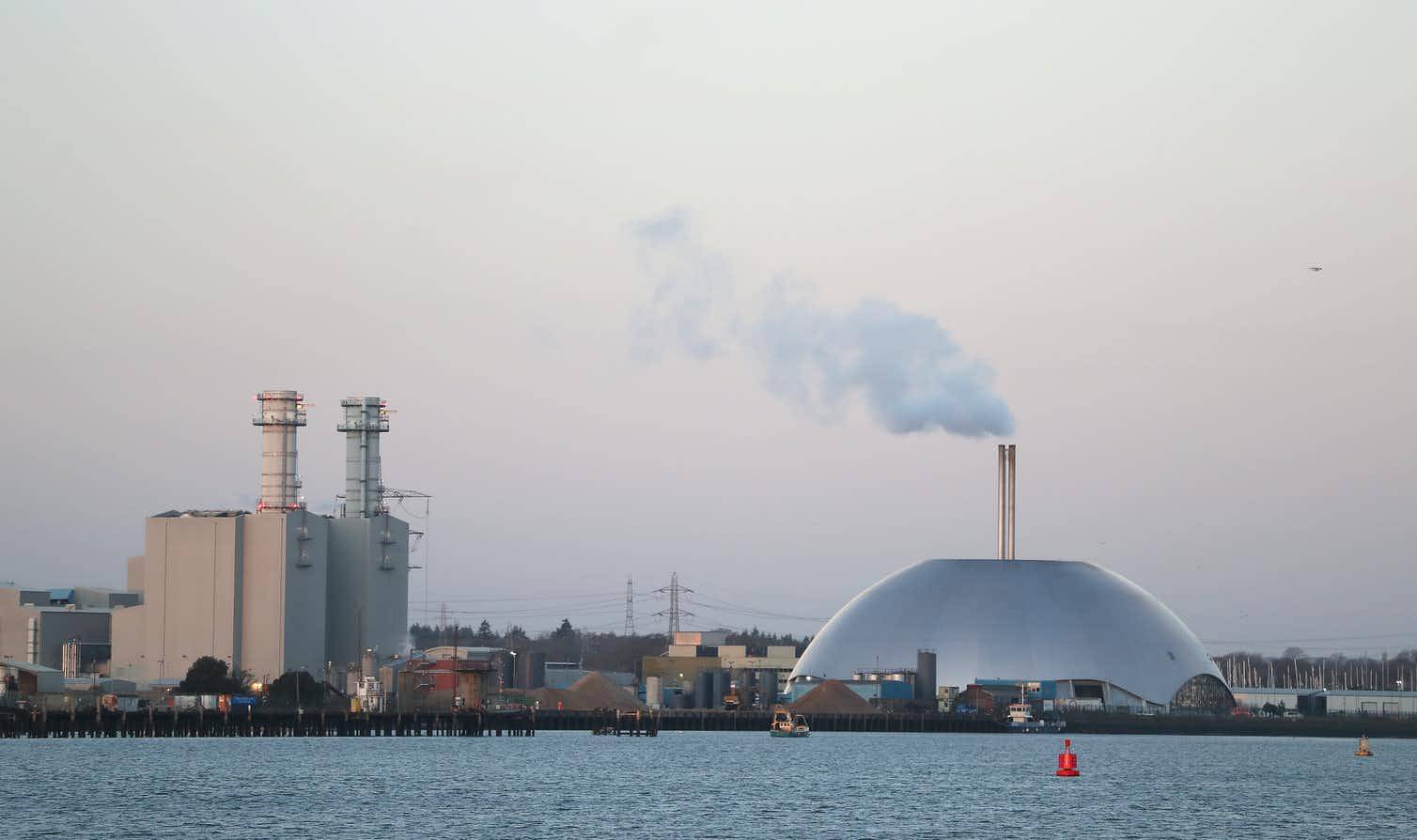All over the world, the COVID-19 pandemic has seen more and more people admitted to hospital, where the high infection rate of the virus makes use of personal protection equipment (PPE) vital for healthcare workers. PPE includes single-use gloves, aprons and gowns, surgical masks, respirators and face protectors in the form of glasses, goggles or face shields.
The type of PPE used depends on the task being performed and the setting. For example, nurses on a COVID-19 ward are advised to wear disposable gloves, an apron, a gown, a respirator and face protection, while community-based carers are advised to wear gloves, aprons and a mask.
The thing about hospital-grade PPE is that you can only use it once to avoid the risk of spreading infection or disease. After completing a task, for example a ward round, all single-use PPE is discarded using standard infection control precautions.
In England, the National Health Service labels waste as either “infectious” (contaminated with bodily fluids), “offensive” (contaminated but not infectious) or “municipal” (similar to household waste). Used PPE is generally labelled as infectious or offensive, which means disposal needs to prevent the transmission of disease to the wider population.
The most effective way to do that is to burn it – high temperatures destroy viruses. That’s why in the UK, waste labelled as infectious is sent to hazardous incineration plants. Other types of used PPE can be landfilled or burnt in non-hazardous facilities or recycled.

Burning PPE
As well as destroying viruses, incineration can reduce the amount of waste left over in general. Heat produced by municipal energy from waste incinerators can also be used as a source of energy, either to heat local buildings or to produce electricity. In 2018, waste incinerated in municipal plants contributed almost 2% of UK energy.
The use of incineration to manage waste is controversial. In the past, incineration had a bad reputation for releasing unwanted gases during the burning process. But in modern waste plants, greenhouse gases that contribute to climate change and toxic gases, which can harm human health, are removed through the use of gas cleaning technologies.
More recently, problems have arisen concerning our growing dependence on incineration and future impacts on sustainability goals. Due to the cost and complexity of installing and running plants, incineration as a waste management option is at risk of technological lock-in, where we become reliant on a less efficient technology due to the long lifespan of the plant.
And the continued need to feed the beast means that some materials that would have been recycled are diverted into plants to ensure enough is available to burn. By destroying these materials, incineration does not align with the circular economy, which aims to maintain material value.
A new world of waste
But for infectious clinical waste, the best option we currently have at our disposal remains incineration. During a pandemic we can expect the demand for disposing of waste PPE will increase, so it is vital to ensure that existing facilities can cope.
In the UK, those in charge of hazardous incinerators say that there is currently enough space to deal with it. However, as a backup, the Environment Agency has relaxed rules allowing waste infected with COVID-19 to be burned in energy from waste incinerators, which was not the case before.

While the UK has relaxed rules around infectious waste, other countries have approached the issue of increased clinical waste differently.
Italy has introduced extra safe procedures for its PPE. Waste is sealed in multiple containers, stored away from others in the hospital and moved via dedicated corridors and elevators.
In China, where at the peak of the virus hospitals in Wuhan were generating up to six times more waste than normal, a new medical waste plant and 46 mobile treatment facilities were constructed to deal with the excess.
For some countries, however, existing systems that are reliant on the informal sector can complicate the COVID-19 waste issue.
India, for example, has a poor record for clinical waste disposal with many violations of government rules reported, including the mixing of clinical and general waste and illegal dumping. In fact, since the start of the pandemic, large amounts of used PPE have been found dumped in open spaces of New Delhi and significant volumes stored by workers in the informal sector for potential resale.
The future of PPE
Once the pandemic is over, there will be time to reflect on the suitability of current systems and whether alternatives can be explored.
Replacing single-use with reusable PPE that is cleaned between uses would reduce the amount of waste. However, the use of chemical cleaning may have other environmental impacts.
To reduce the risk of infection, technology that sterilises wastes and separation techniques that reduce the mixing of infectious waste with general waste could also be introduced. With more waste classed as non-infectious, more recycling options would become available.
Because they require new systems and infrastructure as well as extra staffing, these options should only be considered during a time of reflection when the pandemic is over. And then, only once the immediate focus of patient treatment and infection control has been overcome.
文章来源: The conversation
原文链接: https://theconversation.com/what-happens-to-waste-ppe-during-the-coronavirus-pandemic-137632
- 还没有人评论,欢迎说说您的想法!